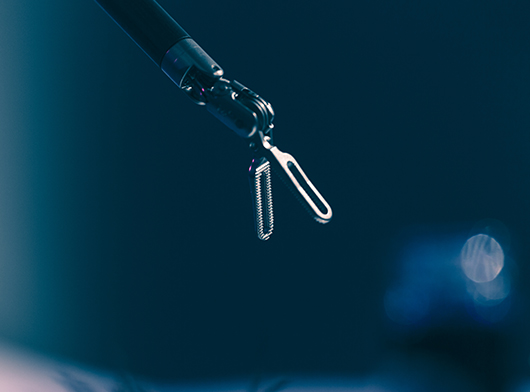Unlike traditional open surgery, which often uses large incisions, minimally invasive surgery relies on small (often a few millimeters) incisions, only large enough for the insertion of thin tubes, cameras, fiber-optic lights and other small surgical tools. Operating surgeon will insert a laparoscope camera (a long, thin tube fixed with a camera and light) in one of the ports and into the abdominal cavity or thoracic cavity (inside the chest). The laparoscope will capture the real time images of the tumor area and the other parts of the abdomen or thorax and send it to monitors in the operating room so that operating surgeons can view clear, high definition and magnified pictures of the area that needs surgery. Your surgeon will then insert other long, thin and specialized laparoscopic surgical instruments through the other ports (holes/incisions) and perform the surgery.
Apollo Hospital offers following types of Minimally Invasive surgery apart from Robotic Surgery:
- Thoracoscopic Surgery: Video-assisted Thoracoscopic Surgery (VATS) is a type of minimally invasive surgery done under general anaesthesia for diagnosing and treating a variety of conditions involving the chest area (thorax). It uses a special video camera called a Thoracoscope. During VATS, your surgeon will make several small incisions on the chest wall. The Thoracoscope will be inserted inside the chest to visualize the inside part and removal of the tumor. After the procedure is over, the incisions are closed and dressing done.
-
Laparoscopic Surgery: is a surgical technique in which short, narrow tubes (trochars) are inserted into the abdomen through small (less than one centimeter) incisions. First incision/port or cannula is used to inflate your abdomen with carbon dioxide gas. This gas allows your doctor to see your abdominal organs more clearly. Once your abdomen is inflated, the surgeon inserts the laparoscope through the incision (long, thin tube instrument with a high-intensity light and a high-resolution camera at the front) and other narrow instruments. Laparoscopy allows your doctor to see inside your body in real time, without open surgery. The surgeon uses these instruments to manipulate, cut, removal of the tumor and sew tissue.
General anesthesia will be used for this type of surgery. This means that you’ll sleep through the procedure and won’t feel any pain. After the surgery is over, the instruments are removed. Your incisions are then closed with stitches or surgical staplers and dressings are placed over the incisions.



.png)

